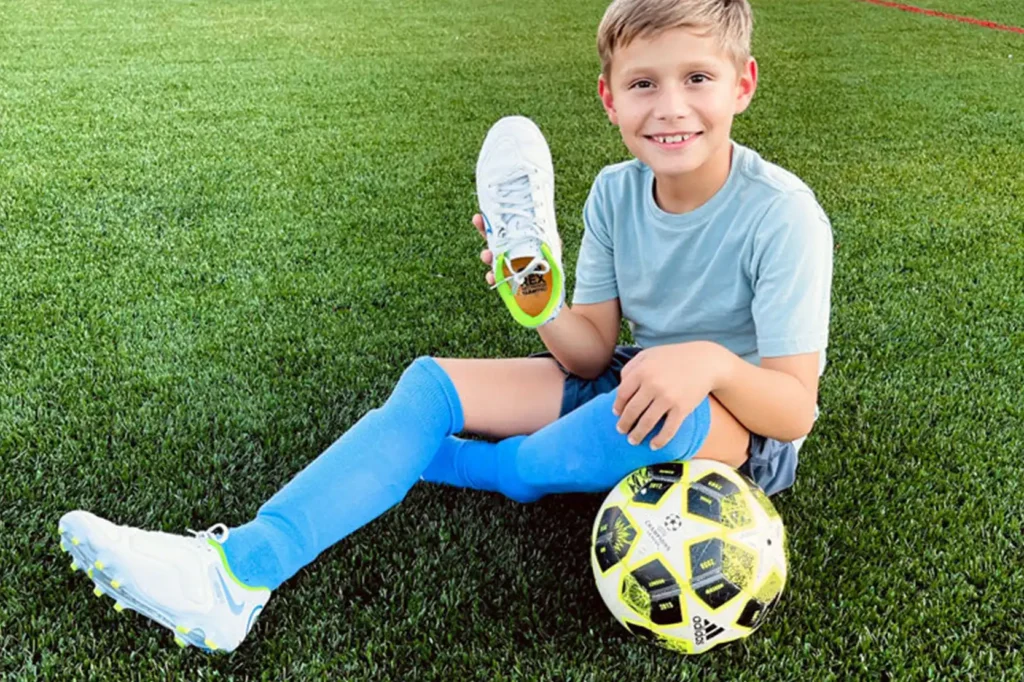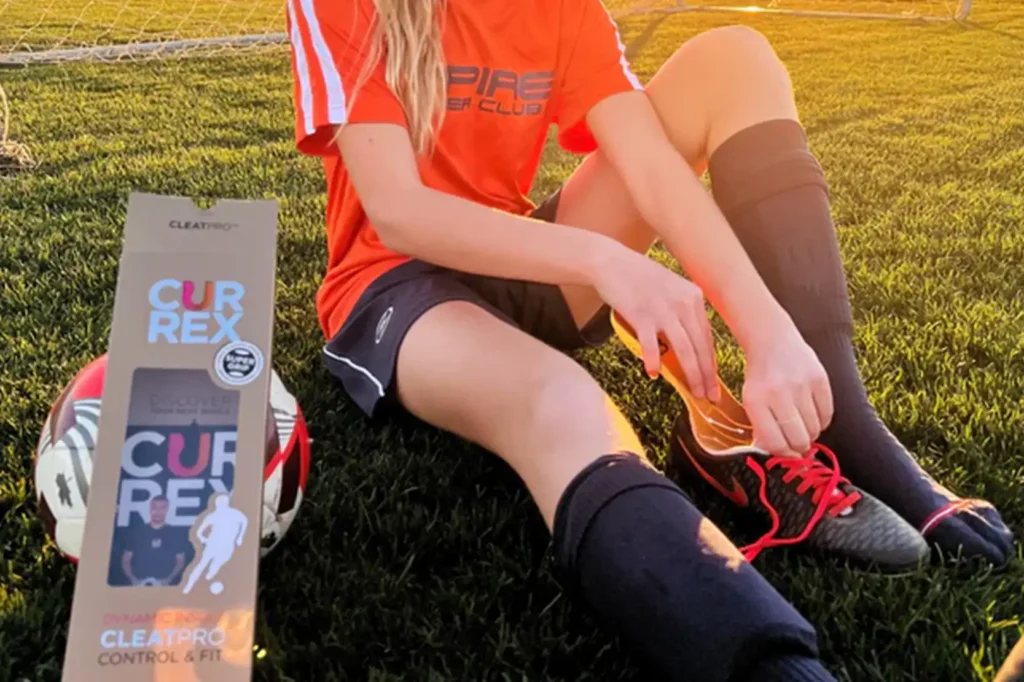Tuli’s, and Spenco. You’ll also find fitting tips, key features to look for, and advice from a seasoned soccer parent. Help your child perform at their best while protecting their growing feet on and off the field. Ideal for parents, coaches, and youth soccer players.
Introduction:
Best kids insoles for soccer cleats provide proper arch support, shock absorption, and heel cushioning to protect young feet and reduce injury risk on the field. If your child plays soccer, you already know how important it is to keep their feet healthy. With the constant running, jumping, and quick changes in direction, soccer puts a lot of stress on a kid’s growing feet especially when they’re wearing stiff soccer cleats that don’t offer much cushioning. This is where kids insoles for soccer cleats come in. The right insole can make all the difference in comfort, performance, and injury prevention.
Many parents overlook insoles, assuming the cleats provide enough support. But most soccer cleats are made with performance in mind, not foot health. If your child complains of sore feet after practice, struggles with heel pain, or has flat feet or high arches, it’s time to consider adding a pair of specialized insoles. In this guide, I’ll walk you through exactly what to look for based on my own experience as a sports parent and someone who has researched and tested multiple insole brands over the years.
Proper insoles improve comfort and balance, which can help your child run more efficiently and confidently during games.
Why Do Kids Need Insoles in Soccer Cleats:
Children’s feet are still growing and developing, which makes them more vulnerable to overuse injuries especially when playing high-impact sports like soccer. Cleats are typically flat and minimalistic, offering little in the way of arch support or heel cushioning. That means every sprint and kick puts extra stress on their heels, arches, and ankles.
Kids also tend to play on different types of surfaces grass, turf, or hard ground which changes the way pressure is distributed through the feet. An insole designed for sports can help absorb shock, support healthy foot alignment, and prevent conditions like Sever’s disease, flat feet fatigue, or even shin splints. Proper insoles don’t just protect; they can enhance performance by giving young athletes better balance and comfort.

Key Features to Look for in Kids’ Soccer Insole Inserts:
These features not only keep your child comfortable but also reduce the risk of common soccer-related foot injuries.
When shopping for soccer cleat insoles, you’ll want to focus on specific features that support both performance and foot health. Here’s what to look for:
1. Arch Support – Choose an insole that matches your child’s foot shape. Flat feet need more structured support, while high arches require cushioning in the midfoot.
2. Heel Cushioning – Since soccer involves a lot of heel strikes and sudden stops, look for shock-absorbing foam or gel in the heel cup to protect the growth plate.
3. Thin Profile & Trim-to-Fit Design – Cleats are snug-fitting, so the insole should be low-profile and customizable to fit without cramping the toes.
4. Moisture-Wicking Material – Soccer gets sweaty. A breathable, antimicrobial top layer helps keep feet dry and reduces odor-causing bacteria.
Best Kids Insoles for Soccer Cleats (Top Picks by Experience):
Over the years, I’ve tested several brands for my own kids and youth soccer team members. Here are a few top choices that stand out in terms of comfort, durability, and injury prevention. Each of these insoles serves different needs, so consider your child’s specific issues whether it’s heel pain, lack of support, or general discomfort on the field.
1. Superfeet Kids Insoles: Superfeet is a leader in orthotic-grade insoles. Their youth version offers structured arch support and a deep heel cup, perfect for stabilizing the foot during high-impact movement.[https://amzn.to/44hh0Ij]
2. Tuli’s Cheetah Heel Cup: Great for children with heel pain or Sever’s disease, the Cheetah insole combines shock-absorbing heel cups with a wraparound ankle brace. Lightweight and ideal for cleats.[https://amzn.to/3TzrEFe]
3. Spenco Kids Polysorb Insoles: These are a solid budget-friendly option. They offer cushioning throughout the foot, antimicrobial protection, and a trim-to-fit design that works well in narrow cleats.[https://amzn.to/4jZMpog]
How to Fit Insoles Properly in Soccer Cleats:
Soccer cleats are tighter than regular shoes, so getting the fit right is crucial. It may take a few tries to get the right fit, but once you do, it can significantly improve your child’s soccer experience. Here’s how you can do it.
- Remove the factory insole – Most cleats come with a thin removable liner. Take it out before adding the new one.
- Trim to size – Lay the new insole over the old one and trace the shape. Trim the new insole for an exact match to prevent bunching.
- Test and break-in – Let your child wear the cleats with the new insoles during practice before a game day to ensure there’s no discomfort or tightness.
Common Foot Issues in Young Soccer Players (And How Insoles Help):
If your child frequently complains about foot discomfort after games, insoles might be the fix. Here are common soccer-related foot problems. I’ve seen many young players bounce back faster from pain once the right insoles were added to their cleats.
- Sever’s Disease (Heel Pain) – Insoles with thick heel cushioning and a raised heel cup can offload pressure and reduce inflammation.
- Flat Feet or Fallen Arches – Orthotic-style insoles with firm arch support help align the foot and prevent fatigue.
- Shin Splints – Proper shock absorption reduces stress on the tibia and calf muscles during running.
- Blisters and Hot Spots – Moisture-wicking top layers and proper insole fit reduce friction.
When to Replace Kids’ Insoles in Cleats:
Just like soccer shoes, insoles wear out. A good rule of thumb is to replace insoles every 4–6 months if your child is playing regularly. Remember: as your child’s feet grow and their activity level changes, their insole needs will change too.
Signs it’s time for a replacement:
- The insole is compressed flat or torn
- Odors linger despite cleaning
- Your child starts complaining of foot pain again
FAQ
Most frequent questions and answers
Yes, you can and should. Insoles offer added support, shock absorption, and help prevent injuries like Sever’s disease.
The Tuli’s Cheetah Heel Cup is a great option for children with heel pain, offering both cushioning and support in one design.
Yes, proper insoles improve comfort and balance, which can help your child run more efficiently and confidently during games.
Conclusion:
Choosing the right kids insoles for soccer cleats is a simple yet powerful way to support your child’s foot health, comfort, and performance on the field. Whether they’re dealing with heel pain, flat feet, or just need better shock absorption, the right insole can make all the difference. With proper fit and quality support, your child can focus more on the game and less on foot discomfort. It’s a smart investment every soccer parent should consider.




